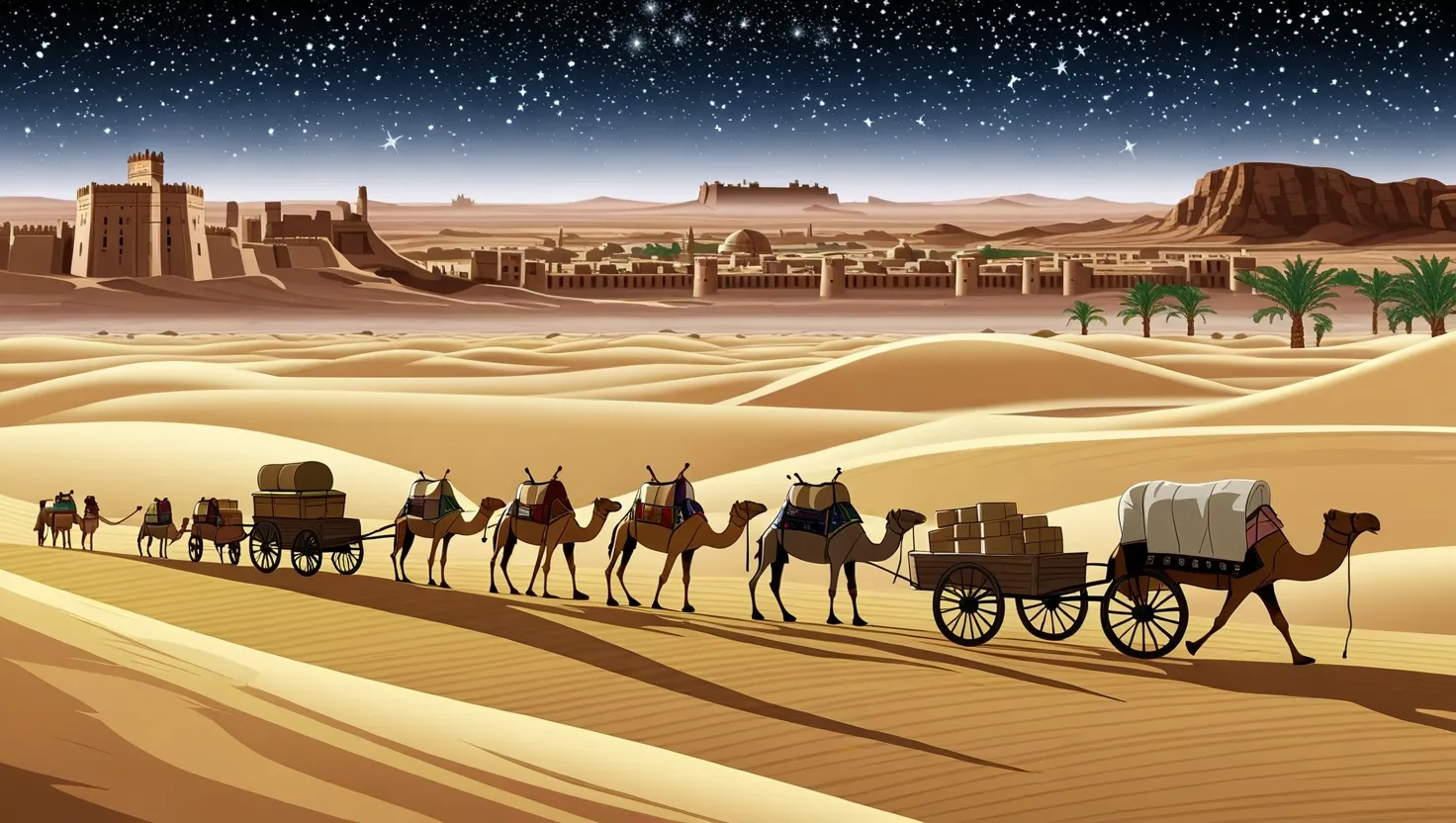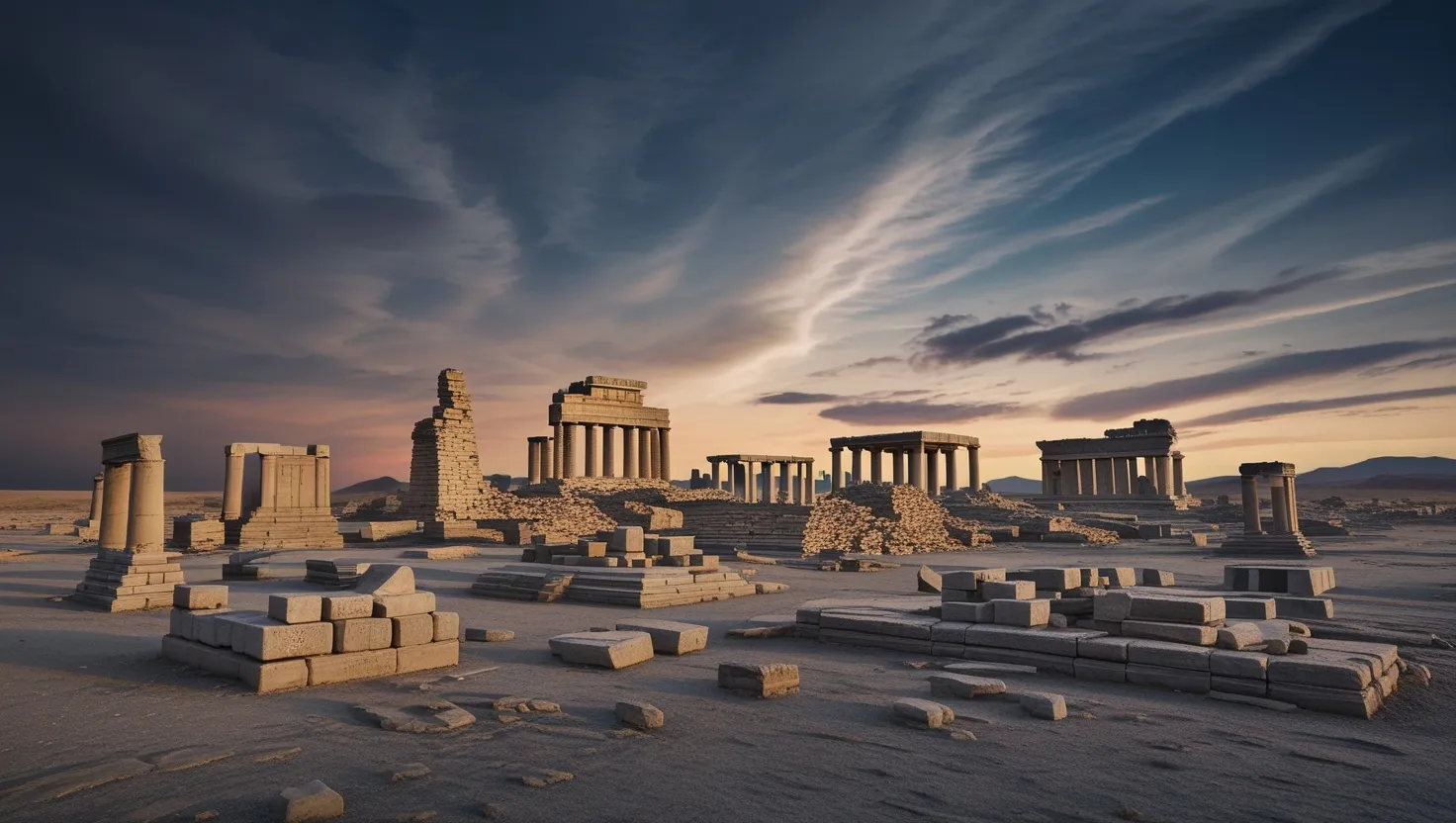As I delve into the fascinating world of ancient trade routes, I am reminded of the profound impact these pathways had on the development of civilizations. The Silk Road, often hailed as the most famous of these routes, was more than just a pathway for goods; it was a conduit for ideas, cultures, and technologies that spanned over 1,500 years.
The Silk Road: A Bridge Between East and West
Imagine a network of caravan routes stretching over 6,400 kilometers, connecting the Roman Empire in the west to the Han Empire in China. This was the Silk Road, a marvel of ancient logistics that facilitated the exchange of silk, spices, precious stones, and even innovative technologies like paper production. As the Chinese philosopher Lao Tzu once said, “A journey of a thousand miles begins with a single step.” The Silk Road was that first step, bridging the gap between East and West.
But what made this route so pivotal? It wasn’t just about the goods; it was about the ideas and cultures that traveled along with them. Greek philosophy found its way to India, while oriental cults influenced Roman religiosity. The cities along this route, such as Samarkand in modern-day Uzbekistan, became hubs of intellectual exchange, fostering a rich cultural diversity that still resonates today.
The Amber Road: A North-South Connection
While the Silk Road connected East and West, the Amber Road linked the Baltic region to the Mediterranean, fostering a unique cultural exchange between Northern and Southern Europe. Amber, often referred to as the “gold of the north,” was highly coveted for its beauty and medicinal properties. This route was not just about trading amber; it was about the art, fashion, and technological innovations that flowed between these regions.
Have you ever wondered how the intricate designs of Northern European jewelry influenced the ornate pieces of Southern Europe? The Amber Road was the conduit for this exchange, creating a blend of styles that defined the aesthetic of ancient Europe. As the Roman historian Tacitus noted, “The sea is the real source of wealth.”
The Incense Route: Fragrances and Faith
The Incense Route, connecting the south of the Arabian Peninsula to the Mediterranean, was another vital pathway. Frankincense and myrrh, highly valued for their religious and medicinal properties, were the main commodities traded along this route. The Nabataean kingdom, with its capital Petra, owed much of its prosperity to the incense trade.
This route was more than just a trade pathway; it was a channel for the spread of religious practices. The fragrances carried along this route were integral to rituals and ceremonies across the ancient world. As the Bible says, “And they came from the east to worship him, and when they saw the star, they rejoiced with exceeding great joy.” The Incense Route played a silent but significant role in these ancient religious practices.
The Trans-Saharan Trade Route: Gold, Salt, and Slaves
The Trans-Saharan Trade Route, spanning across the Sahara Desert, connected sub-Saharan Africa to North Africa and beyond. This route was a lifeline for the exchange of gold, salt, and slaves, playing a crucial role in the rise of West African empires like the Ghana and Mali empires.
But what about the human cost of this trade? The Trans-Saharan Trade Route was also a pathway for the slave trade, a grim reminder of the darker aspects of human history. As the African proverb goes, “When elephants fight, it is the grass that suffers.” The impact of this trade on African societies was profound, shaping their economies, cultures, and social structures.
The Maritime Silk Road: Sailing the Seas
The Maritime Silk Road, linking East Asia to the Middle East and Europe via sea routes, was another significant pathway. This route promoted naval technology advancements and the spread of religions like Buddhism and Islam across Southeast Asia.
Imagine the bustling ports of ancient China, where ships set sail for distant lands, carrying not just goods but also ideas and beliefs. The Maritime Silk Road was a testament to human ingenuity and the desire to explore and connect. As the ancient Greek philosopher Aristotle said, “The whole is more than the sum of its parts.” This route exemplified how individual journeys contributed to a larger, interconnected world.
A Legacy of Interconnectedness
These ancient trade routes were more than just pathways for goods; they were the lifelines of ancient civilizations. They facilitated economic prosperity, cultural exchange, and technological progress. As we look at our globalized world today, it’s clear that these routes laid the foundation for our modern interconnectedness.
So, the next time you hear about globalization, remember the ancient trade routes that paved the way. They were the first steps in a journey that continues to shape our world. As the ancient Chinese saying goes, “A single grain of rice can tip the scale.” These trade routes were those grains of rice, tipping the scale of history in ways that still resonate today.
In conclusion, the story of ancient trade routes is a story of human connection, innovation, and resilience. It’s a reminder that even in the most ancient of times, our world was more interconnected than we often realize. As we move forward in this globalized era, let’s not forget the pathways that brought us here.






